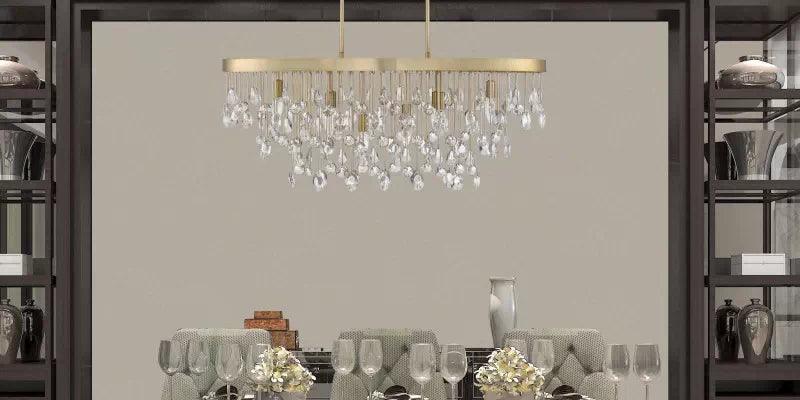A chandelier, with its elegance and style, can transform any room into a regal setting. However, buying a chandelier is not a simple task. It requires careful consideration of various factors such as size, style, material, and budget. This article is a comprehensive guide to help you navigate the process of choosing the perfect chandelier for your home.
Understanding the Importance of a Chandelier
A chandelier is not just a lighting fixture; it is a statement piece that dramatically impacts a room's ambiance. Whether you're aiming for a modern, traditional, or rustic look, a chandelier can help you achieve your desired style. It creates a focal point in the room, drawing attention and adding a touch of sophistication.

Establishing Your Budget
Before diving into designs and styles, it’s crucial to determine your budget. Chandeliers come in a wide range of prices, from affordable options to luxurious designs costing thousands. Take into account not just the cost of the chandelier, but also costs associated with installation and maintenance.
Choosing the Right Style
Chandeliers come in a myriad of styles. From crystal chandeliers boasting an extravagant and traditional appeal to modern chandeliers with sleek lines and minimalist designs, the options are endless. Rustic chandeliers, made of antlers or wood, can add a cozy, cabin-like feel to a room.
When considering the style, think about the overall design theme of your room. The chandelier should complement the room's existing décor and not clash with it.
The Size and Scale of Your Chandelier
The size of your chandelier should be proportionate to the room and the furniture it illuminates. A chandelier that’s too large can overpower the room, while one that’s too small might not provide sufficient lighting.
For instance, if you're placing the chandelier over a dining table, a good rule of thumb is that the chandelier should be about half to two-thirds the width of the table.

Ceiling Height and Chandelier Placement
The height of your ceiling is another crucial factor in choosing a chandelier. In general, the chandelier should hang about 30 to 34 inches over a table with an 8-foot ceiling height. For every additional foot of ceiling height, increase the chandelier height by 3 inches.
Remember to also factor in the height of the people who live in the house. The chandelier should be high enough to not obstruct anyone’s view or cause anyone to bump their heads.

Chandelier Material and Finish
Chandeliers come in a variety of materials, including metal, glass, crystal, and even wood. The material and finish of the chandelier should complement other finishes in your room. For example, a crystal chandelier might look stunning in a room with a classic, luxurious décor, while a metal or wooden chandelier could be a better fit for a modern or rustic room.

Type of Lighting
Chandeliers can provide ambient, task, or accent lighting, depending on their design and placement. Consider your lighting needs when choosing a chandelier. For instance, a crystal chandelier would provide ambient lighting that’s perfect for creating a warm, inviting atmosphere in a dining room, while a chandelier with downlights could provide task lighting suitable for a kitchen island.
Chandelier Bulbs and Energy Efficiency
The type of bulb used in the chandelier is another important factor. Traditional incandescent bulbs, halogen bulbs, compact fluorescent lights (CFLs), and light-emitting diodes (LEDs) are all options. LEDs are the most energy-efficient and long-lasting, although they might be more expensive upfront.
Outdoor Chandeliers
If you're thinking about adding a chandelier to an outdoor space, make sure it’s designed for outdoor use. Outdoor chandeliers should be damp or wet rated, meaning they’re designed to withstand moisture and varying temperatures.






